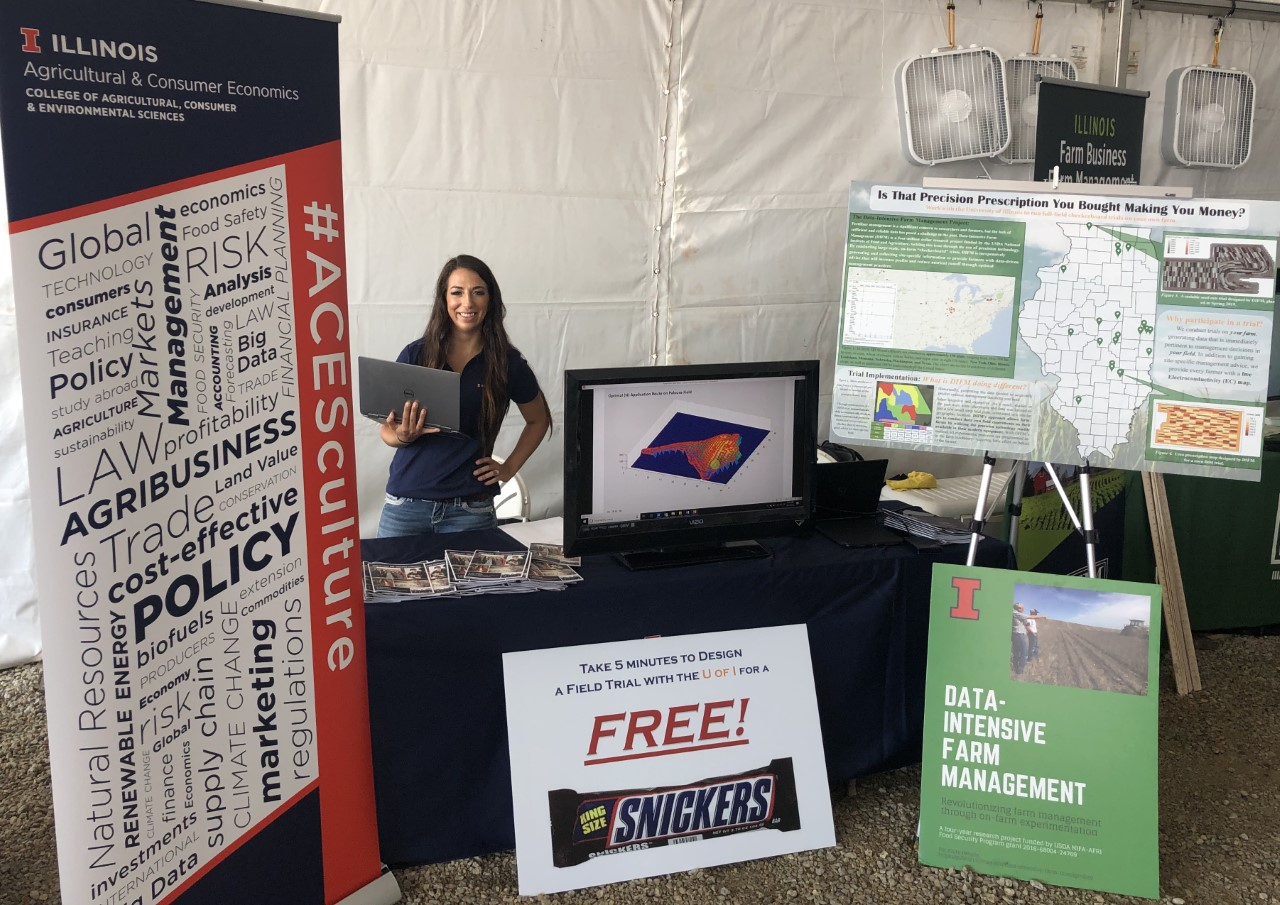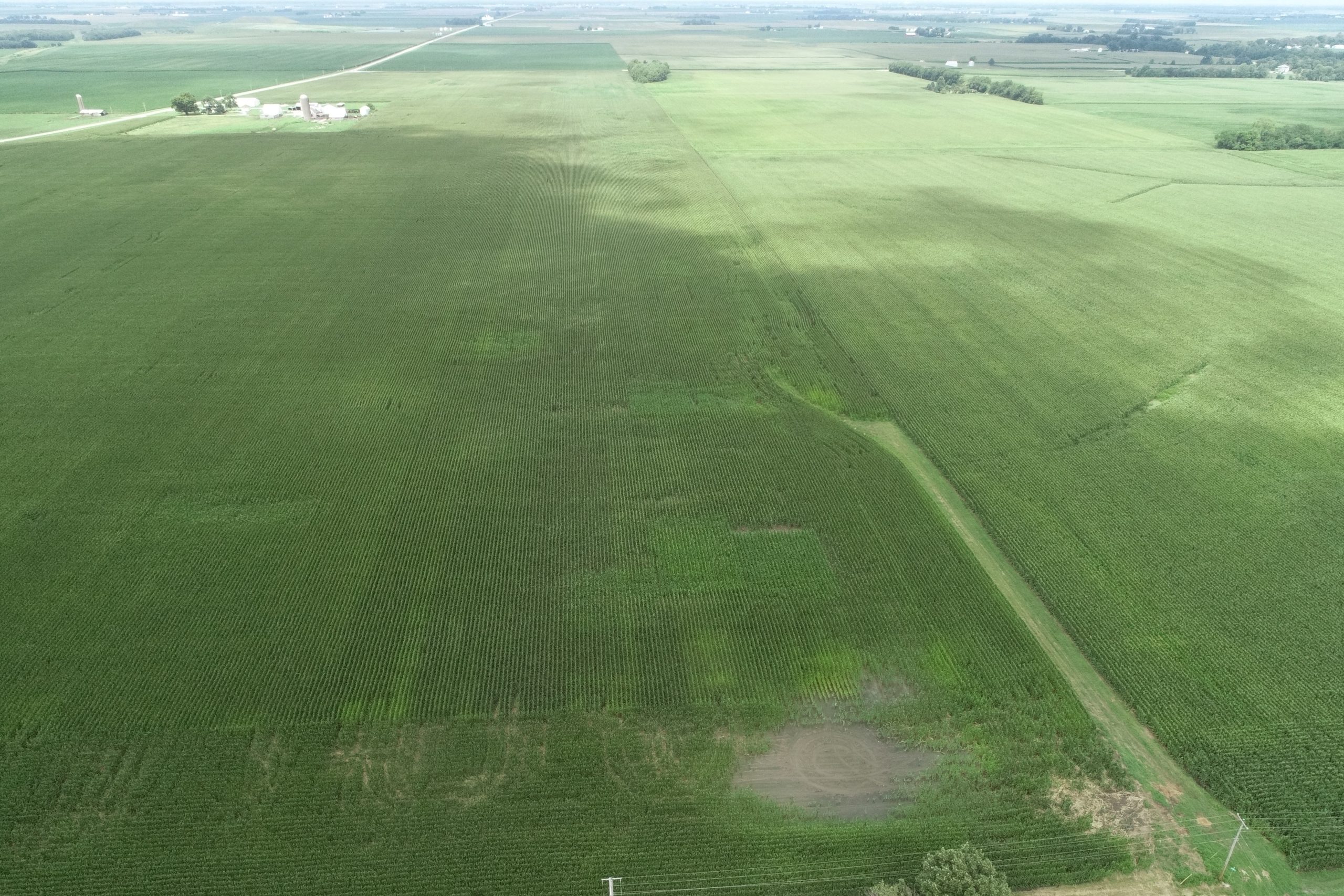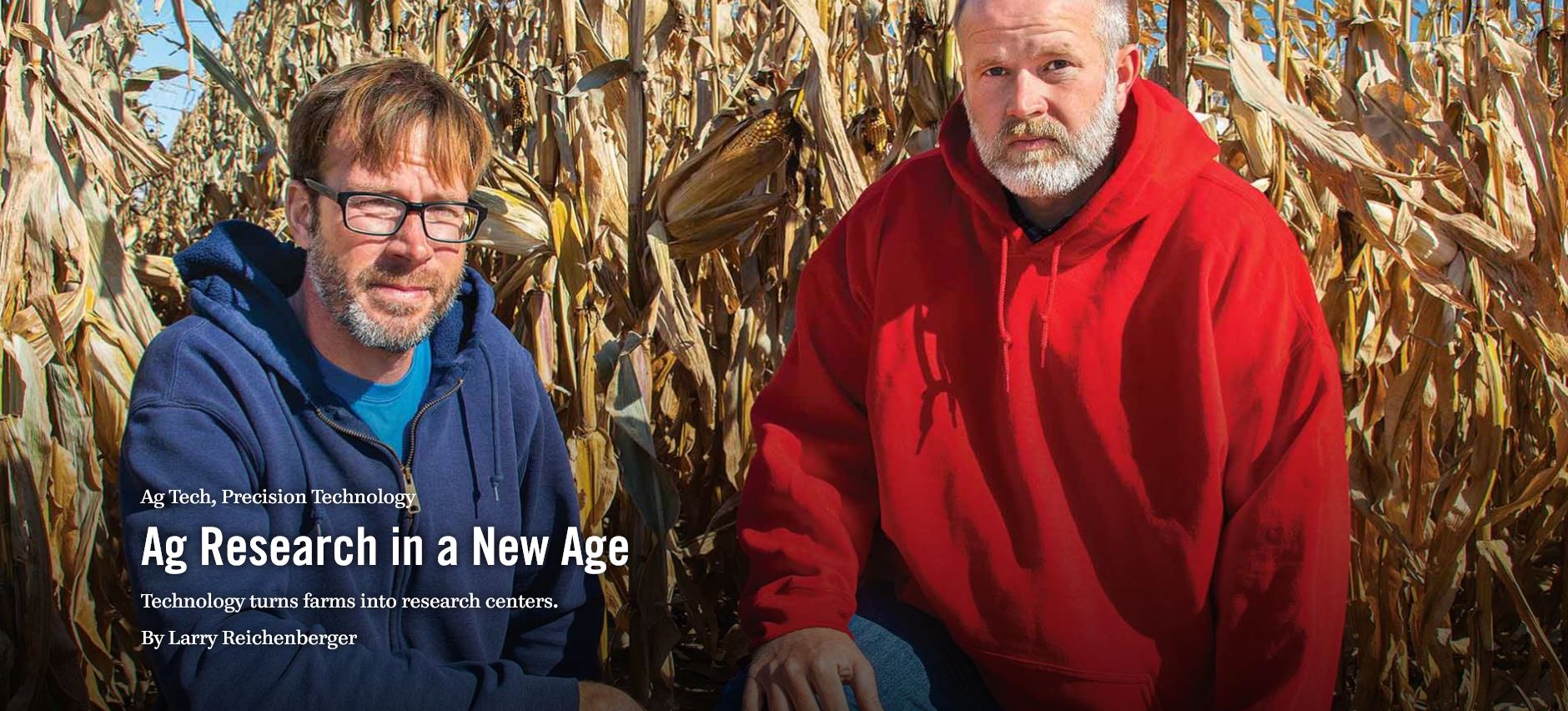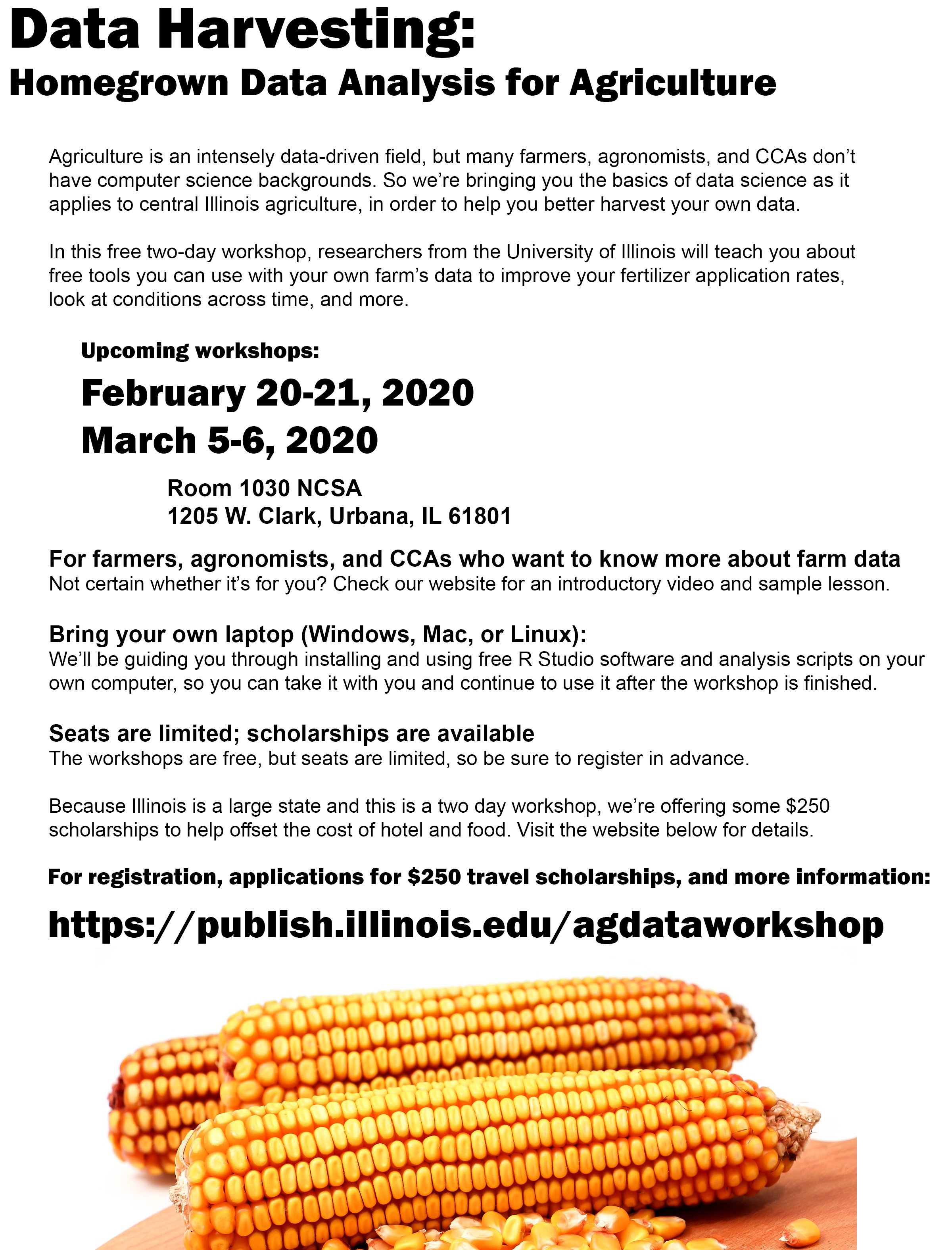Take a look at this 2020 on-farm trial located in Illinois.
Author Archives: Carli Jae Miller
New Faces at DIFM: Francisco Gamino
Meet DIFM’s new team member, Francisco Gamino.
My name is Francisco Gamino and I am studying Computer Science + Crop Science at the University of Illinois in Urbana – Champaign (UIUC).
I have over three years of experience working as an independent contractor in programming and web development. I’ve worked with various companies and institutions in town — including Inprentus, Inc., UIUC Physics, Sagamore Venture Publishing LLC, and the NSF-funded Materials Research Science and Engineering Center in the UIUC Materials Research Lab. I specialize in programming and website design and often work in projects that require automation, data migration, and efficient workflow design.
Before transferring to UIUC, I attended Parkland College in Champaign, Illinois, where I earned an associate degree in Data Systems and Development and certificates in Database Management and General Programming. I completed the Leadership Academy and I served as the Vice President of the Phi Theta Kappa Honor Society and the President of Club Latino. I’m an All-Illinois Academic team member.
I can speak, read, and write English and Spanish fluently. I have strong communication skills and I’m always looking for opportunities to improve myself.
I joined the DIFM project in the spring of 2020 to help create an efficient system for working with data and help them take it to the next level. Currently, we are collaborating with Oracle Corporation to build this system and I’m heavily involved with the data migration and user interface design aspects of the project. I also work with data in QGIS and R to create and manage multipurpose datasets.
In my free time, I enjoy playing chess, bike riding, cooking, coding, and watching movies.
AgriNews: Helping farmers conduct their own on-farm trials
Talon Becker is a University of Illinois Extension Commercial Agriculture Educator working with the Data-Intensive Farm Management (DIFM) project to help farmers conduct their own on-farm trials throughout Illinois.
What seeding rate and/or fertilizer rate will result in the best possible yield for my field? This is one of the many questions that farmers ask themselves every year and that researchers and agronomists have been trying to answer for decades.
Numerous environmental and genetic hybrid or variety factors, either on their own or through interaction with each other, influence the actual optimum seeding and fertilizer rates for a given field or section of a field.
This is not a new concept. The influence of genetic and environmental variation and the interaction of these two major factors, often denoted as “GxE,” have been recognized since the early days of modern agronomic research.
Until recently, the best tools at the disposal of agronomists and agricultural researchers for estimating and accounting for the influence of these sources of variation in the estimation of optimal levels of a given agronomic input, such as seeding rate, have been multi-site and multi-year replicated trials.
Read the full article by Talon Becker, published on AgriNews: https://www.agrinews-pubs.com/2020/03/17/helping-farmers-conduct-their-own-on-farm-trials/asoec60/
The Furrow: Ag Research in a New Age
The Data-Intensive Farm Management Project was featured in the recent February edition of The Furrow.
Precision ag technology is spurring a dramatic change in agricultural research. It’s replacing the time-consuming test plot techniques of the past – the marking flags, tape measures, weigh wagons, and grad students – with today’s automated computer files, variable-rate controllers, and yield monitors. These new tools are empowering growers to easily and economically generate data that makes on-farm research a reality.
“This new approach is a real game-changer,” says David Bullock, agricultural economist at the University of Illinois. “The future could see farmers conducting experiments on their fields as routinely as they now take soil samples. The result will be management recommendations based on field data, rather than a ‘rule of thumb’ recommendation.”
Read the full article by Larry Reichenberger on The Furrow: https://www.johndeerefurrow.com/2020/02/18/ag-research-in-a-new-age/
Meet Our New Student Intern: Emanuel Hernández Cornejo
An introduction by Emanuel:
My name is Emanuel Hernández Cornejo and I am from Panama, located in Central America. I started my education at 5 years old at a school close to my neighborhood because my parents wanted to give me the education they never had. At the beginning of my studies, I was not a dedicated person because I did not know what I wanted to do. However, after some advice and time, I understood that the best way to reach my goal is through further education. Years later with a few months left in high school in Panama, after I had focused on one path, I won a scholarship under the branch of agriculture from a university in Honduras. Thanks to this aid, I was not only able to continue my education, but also experience a new culture and new people. It was there that I learned new knowledge about the earth, animals, and the importance behind all of these things. More specifically, it taught me how the world is advancing technologically which will lead to great changes in humanity.
Registration Open for Data Harvesting Workshop
Trevisan Presents at ASA-CSSA-SSSA International Annual Meeting
The American Society of Agronomy, the Crop Science Society of America, and the Soil Science Society of America hosted the 2019 International Annual Meeting, “Embracing the Digital Environment,” on November 10-13, 2019, in San Antonio, Texas.
Rodrigo Trevisan, graduate student in Crop Sciences, gave two presentations titled, Understanding the Spatial Variability of Optimum Nitrogen Rates Using Remote Sensing and on-Farm Precision Experimentation and Using Deep Learning to Predict Optimum Crop Management Decisions.
View the presentation materials below:
- Understanding the Spatial Variability of Optimum Nitrogen Rates Using Remote Sensing and on-Farm Precision Experimentation
- Using Deep Learning To Predict Optimum Crop Management Decisions – Trevisan (Abstract)
- Using Deep Learning to Predict Optimum Crop Management Decisions (Poster)
______________________________________________________________________
A Visit to the Field
It was a chilly harvest day in Illinois, but that didn’t phase University of Illinois Ph.D. student, Aolin Gong. Gong visited one of the DIFM fields to gain some firsthand experience of what harvest is like behind the scenes.
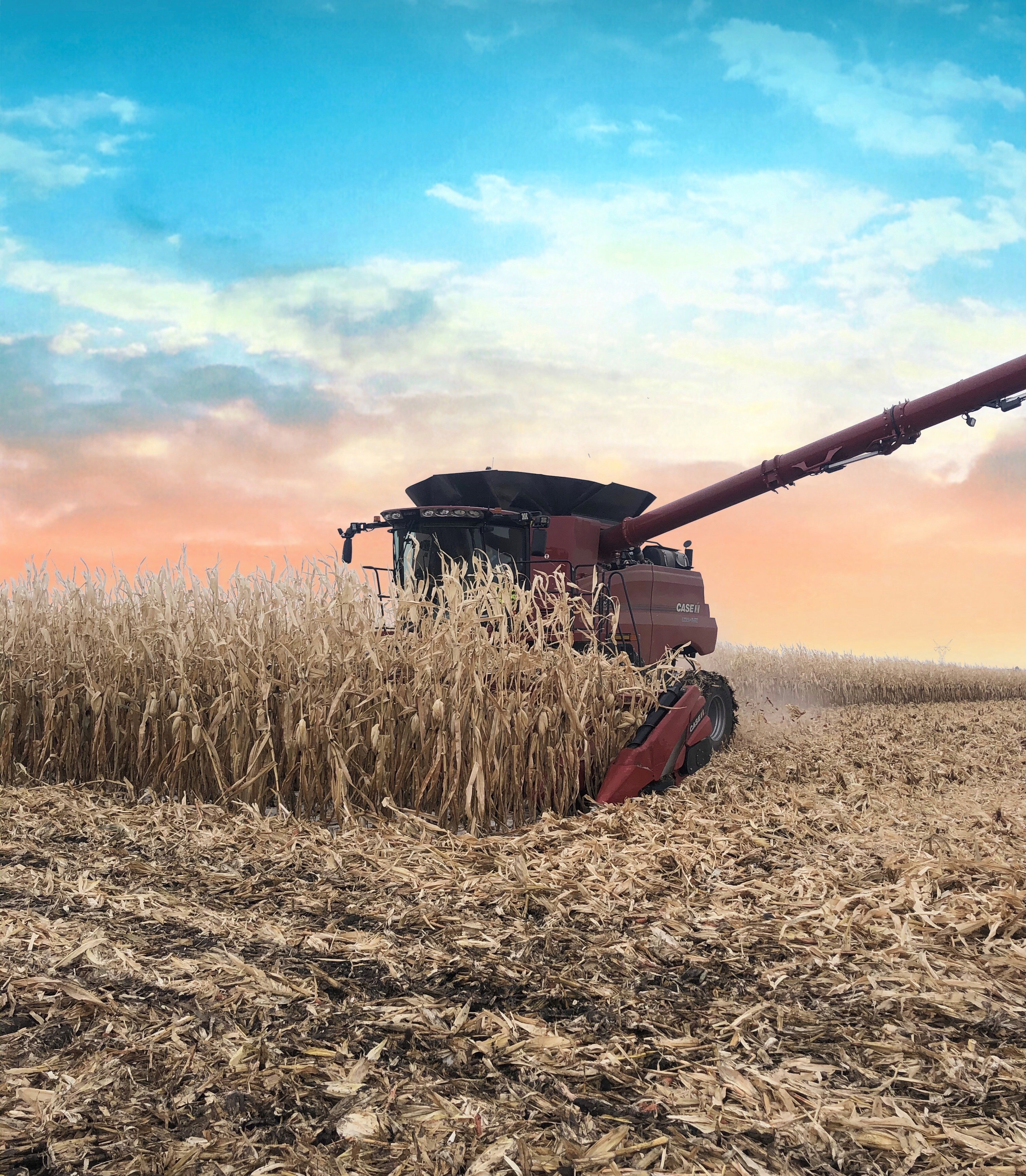
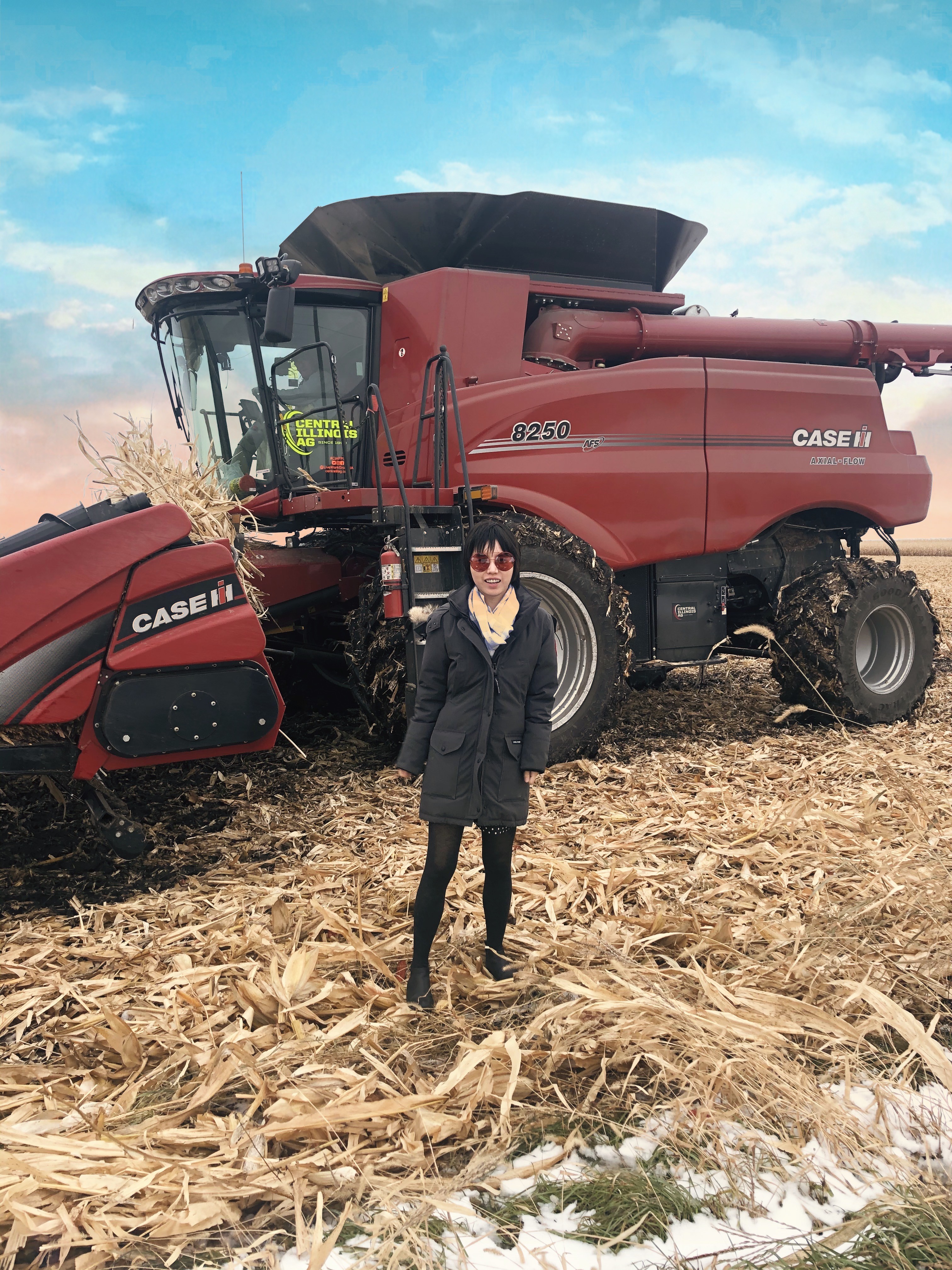
Pictured above is graduate student, Aolin Gong, standing in front of the CASE IH combine. Pictures taken by DIFM Coordinator, Carli Miller.
FarmWeekNow: Interview with Dr. David Bullock
Dr. Bullock, PI of the Data-Intensive Farm Management Project, was recently interviewed by FarmWeekNow following his presentation at the University of Illinois Agronomy Day.
A data management research team, which includes University of Illinois researchers, is helping farmers leverage their existing precision technology to conduct on-farm trials and enhance their management, according to David Bullock, U of I agricultural and consumer economics professor.
Bullock, who spoke Thursday at U of I Agronomy Day, leads the Data Intensive Farm Management (DIFM) research team that generates and analyzes agronomic data to improve how the world fertilizes crops. DIFM is in the fourth year of a $4 million research project funded by the USDA National Institute of Food and Agriculture. -FarmWeekNow
Click here to read the full article by FarmWeekNow.
Visit us at the Farm Progress Show!
Visit the University of Illinois ACES tent at the Farm Progress Show and design a free field trial on your own field with the Data-Intensive Farm Management team (+ a free snickers bar included with each trial design)!
We will be creating trials and answering questions about the DIFM project from 8:00am-5:00pm each day. Stop by and chat with us!